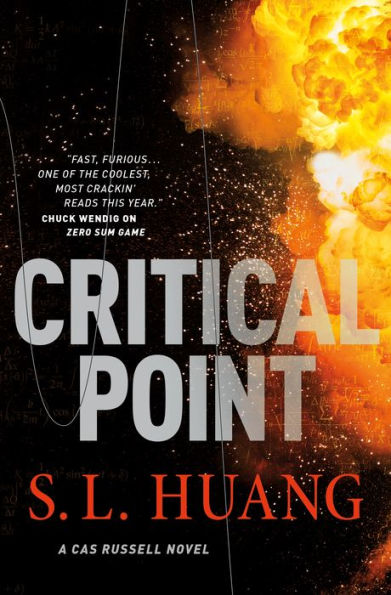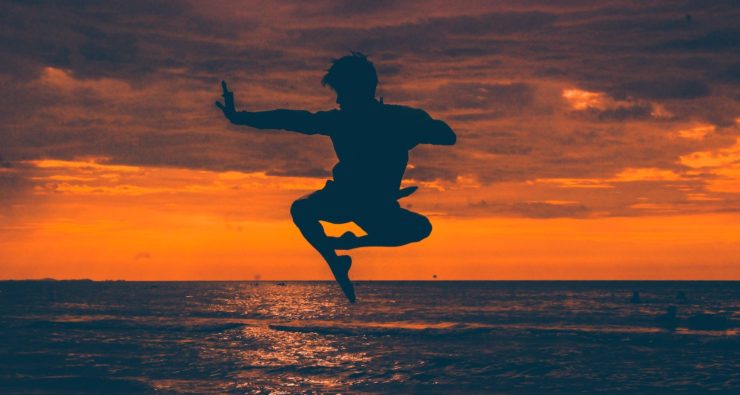Fighting is character.
The barroom brawler. The Western gunslinger. The balletic dance-like fighting so often assigned to female action stars. The grim war hero, the foppish fencer…or the stylized martial artist.
Much has been written about the type of fight moves often assigned to women—so often high kicks and acrobatic tumbling instead of a good solid right hook and a bottle to the face. In fact, I’m very conscious when I’m writing my own female characters to err on the side of making them boxers and brawlers, because in media, a female fighter too often really means a gymnast, and it’s so very frustrating to see that every single time.
Equally frustrating—but less talked about—is that an Asian action star almost always means a martial artist. And not just any martial artist, but someone with amazing, stylized moves that elicit gasps with their expertise.
*
The history here is a complicated one.
Much media discussion has focused on how, until the success of Crazy Rich Asians—and the following successes of Parasite and The Farewell—it was nearly impossible to find a mainstream movie with an Asian-packed cast that wasn’t a martial arts movie. The history of Asian American and Pacific Islander (AAPI) representation in Hollywood is one filled with difficulties and setbacks—yellowface, stereotyping, whitewashing, and discrimination.
Martial arts movies provided an important early path to stardom for AAPI actors in Hollywood when so much else was closed to them. They gave us A-list star power for actors like Bruce Lee, Jackie Chan, Michelle Yeoh, Jet Li, and Maggie Q. Plus, martial arts movies are amazing—personally, I’m a big fan of them. So in some sense they’ve played a very important role in the fight for opportunity. But they also shouldn’t ever have been the only story people who look like me are allowed to star in. And it is fantastically good to finally be getting movies that showcase AAPI actors in roles that have nothing to do with martial arts—romantic leads, comic relief, or family matriarchs.
Now in the present day, as we’re finally seeing breakthroughs in representation that should have happened long ago, one might think that at least we can check “action star” off the list when trying to make sure AAPI actors have access to a broad diversity of roles. After all, for so long that was the only thing even allowed, right?
But again, fighting is character.
Buy the Book


Critical Point
As someone who’s worked in stunts in Hollywood for a long time—as someone who is “ethnic” and has worked in stunts in Hollywood for a long time—I am keenly aware of this. When we choreograph fights, we’re storytelling. That’s a huge part of the job—style, character, emotional stakes. I’ll let you guess how many calls I got to be in a street riot versus asking whether I could do spinning kicks. And you can see this even more starkly if we zoom out to focus on movies and television shows that aren’t even led by majority-AAPI casts. Over and over again, in action stories like The Expendables, Suicide Squad, Kill Bill, Green Hornet, RED 2, Agents of Shield, or Rogue One, the Asian ass-kicker in the action ensemble automatically has the fighting style of an expert martial artist. And we don’t question it. But it’s story, and it’s character, and it’s important to the way we watch the film. You’d never exchange the choreography for Jet Li and Sly Stallone in The Expendables, nor the moves of Byung Hun Lee and Bruce Willis in RED 2.
Don’t get me wrong—I will watch a martial arts actor forever and never look away. And it can certainly be argued that you’re not going to cast Jet Li and not give him an amazing martial arts sequence; after all, the audience is coming to see that and is going to scream bloody murder if they don’t get it. The point here is that the path has always been too narrow. We know actors like Jet Li and Jackie Chan because they were able to make a name through martial arts; consequently the martial arts is their trademark and we want to see them do it. But there was never very much room for the Indonesian Bruce Willis or the Japanese Michelle Rodriguez.
We don’t just need the non-action leading roles. We need the leading action roles who aren’t martial artists.
For a stark visual demonstration of this, check out the hashtag #StarringJohnCho, which Photoshops John Cho’s image into movie posters… and makes it stunningly obvious how we almost never get our faces leading action movies like The Avengers, Jurassic World, or Kingsman. When it comes to action movies, we’re still fighting to get more than the narrow box with Rumble in the Bronx and Crouching Tiger, Hidden Dragon.
It may be a great box—but I want so much more. I want the gunslingers, the soldiers, the wrestlers, the rival gangs and drug kingpins, the unrepentant tanks and uncouth provocateurs. The ex-Black Ops mercenary with a biceps the size of my face and a heart of gold, or the cyberpunk vigilante who punches through walls and walks slowly away from explosions.
I want it all.
*
Some AAPI actors are finding success in action roles that don’t look like they need to be played on wires. Kenneth Choi comes to mind; he’s been featured in gritty properties like Sons of Anarchy and was fortunately able to play one of Captain America’s Howling Commandos without breaking out the karate. And we’re seeing more and more AAPI actors in roles such as cops and criminals who run the gamut of fight styles, especially on television, where we’ve got characters played by incredible trailblazers like Daniel Dae Kim and Priyanka Chopra…though it’s not nearly enough yet.
And we do have at least two major, marquee-level AAPI action stars I can think of who aren’t shoehorned into only doing stylized martial arts: Keanu Reeves and Dwayne “The Rock” Johnson. Keanu Reeves certainly can play roles where he “knows kung fu,” but we also see him in a much broader array of action roles, shooting up crowds or putting pencils through people’s skulls. And The Rock, of course, is best known for his professional wrestling background, and is much more likely to be shown punching people into next year than doing a backflip into a five-forty roundhouse.
Actors like Reeves and Johnson are, problematically, often left out of discussions like this—likely because many media critics are uncomfortably aware that audiences may not be “reading” them as actors of color, and thus casting directors are more comfortable casting them as leads. But it’s especially disturbing to see Reeves and Johnson elided since as far as I can tell from the Internet, both men are quite proud of their AAPI heritage. “Passing privilege” is a thorny, fraught topic that I’m not going to get into here; there is enough history of pain and nuance in such a concept for a thousand essays. Suffice to say that I’m cheering on Reeves and Johnson and their successes. And at the same time, I think it’s fair to say that if Hollywood only allows actors who meet some bar of being “sufficiently mixed” a path to success as that particular kind of action hero… that’s a problem in itself. And I suspect Johnson and Reeves would agree.
*
All this brings up an important point, one that is, I think, the crux of this essay.
AAPI people are diverse.
It’s somewhat complicated that we even lump all our different peoples together at all. For example, here in the United States, the histories and needs of Chinese-American communities, Vietnamese-American communities, Hmong-American communities, Pakistani-American communities—or, say, the history and needs of the people of American Samoa, or of Native Hawaiians—are going to have myriad important differences. Even within demographic communities we have as many variegated stripes of humanity as are in the world as a whole. Of course we do. To think otherwise is to fall into what Chimamanda Ngozi Adichie calls “the danger of a single story.”
Yet Hollywood lumps people together by the way we look. All action roles played by someone who looks “Asian”—meaning some vague media casting idea of East Asian—will automatically be full of kung fu, karate, or tae kwon do. Nevermind that in the U.S. in real life, there is quite a high number of AAPI fighters highly ranked in MMA and other ring fighting, or that we have plenty of AAPI veterans who have served in the United States armed forces, or, on the more upsetting end, that our communities suffer from violent criminals in the form of gangs or domestic violence far more than we do from guys with nunchucks. Some demographics of AAPI actors tend to get left out of action films entirely—for example, I’m hard-pressed to think of any big-screen Hollywood action star of South Asian descent, no matter what fight style we consider. Not to mention the fact that real-life AAPI people of any demographic have a broad range of physical appearances.
But Hollywood stereotypes have never concerned themselves much with the reality of our diversity. And so far, unfortunately…action films have struggled to be any different.
S.L. Huang has a math degree from MIT and is a weapons expert and professional stuntwoman who has worked in Hollywood on Battlestar Galactica and a number of other productions. Her novels include the Cas Russell series—book three, Critical Point, is available now from Tor Books. Her short fiction has appeared in Strange Horizons, Nature, Daily Science Fiction, and The Best American Science Fiction & Fantasy 2016.










